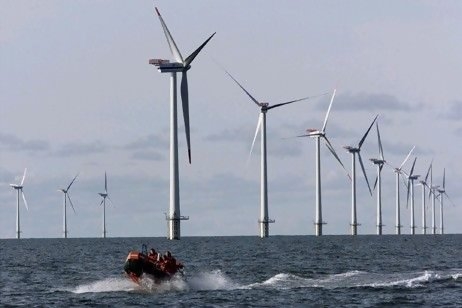A power-generating system designed for remote offshore operations that could cut costs and reduce carbon dioxide emissions by 40 per cent is being offered for installation in the Arabian Gulf.
Developed for the oil and gas industry by the Norwegian classification society Det Norske Veritas (DNV), the "Offshore Power system for a new era", or OPera, as it has been dubbed, is essentially a high-voltage power grid supplied by a floating power station.
The system uses a gas-fired combined-cycle power plant that provides 15 per cent more efficient power generation than a conventional turbine
The system uses a gas-fired combined-cycle power plant that provides 15 per cent more efficient power generation than a conventional turbine and, by consolidating power generation, it allows equipment to run at a more optimal load, reducing fuel consumption and emissions.
The system can be used in remote ultra-deep waters, sharing power between several production units, or in shallow, inshore waters that are remote from onshore power sources.
It centralizes and shares power generation between several production units, improving efficiency
It centralizes and shares power generation between several production units, improving efficiency and allowing personnel, maintenance and spare parts to be consolidated into a central location.
"The need for topside processing power generation at each and every unit is eliminated, thus freeing up additional available deck space," said Sven-Erik Borresen, the senior consultant for subsea and well systems, at DNV North America.
"Significant increases in revenue could potentially be achieved with the installation of additional processing capabilities, resulting in more oil production from the same size installation."
The system is fuelled by gas piped from the field it serves and can be used to power a diverse range of field types
It can also be tailored to different installations and serve as a logistical hub, a centralized carbon dioxide removal unit, or part of offshore liquefied natural gas (LNG) production.
DNV views the system as particularly applicable to deepwater projects and the increasing use of stationary floating facilities such as FPSOs (floating production, storage and offloading) and other floating production units (FPUs), which require an enormous amount of power to operate.
Royal Dutch Shell is developing the world's largest floating vessel to house a huge FLNG (floating liquid natural gas) facility for its Prelude Field off the north-west coast of Australia.
The Prelude FLNG facility will produce at least 5.3 million tons of LNG a year
The facility, which will have decks measuring 488 meters by 74 meters, the length of more than four football fields, will be used to chill gas to minus 162°C turning it into liquid and shrinking its volume by 600 times, allowing it to be shipped easily. The Prelude FLNG facility will produce at least 5.3 million tons of LNG a year.
Chevron, meanwhile, plans to allocate 28 per cent of its project spend over the next five years on deepwater resources.
"The OPera concept can be detailed in different sizes and adapted to different field developments," said Mr Børresen.
With the increasing power demand offshore, particularly from subsea consumers, this concept can serve as a more responsible power supply, reducing emissions
"With the increasing power demand offshore, particularly from subsea consumers, this concept can serve as a more responsible power supply, reducing emissions. A shared power source also frees up deck space on the connected installations that can be utilized in a number of ways, to be decided by the stakeholders involved.
"The modular power arrangement makes possible future scaling up, or down, of capacity to meet the power needs of future installations or escalated power demand of existing connected installations.
Depending on water depth, different platform and hull designs can support the power plant
"Depending on water depth, different platform and hull designs can support the power plant. To accommodate the power equipment in ultra-deep water scenarios, a semi-submersible platform seems the ideal configuration. For shallow water, a fixed structure or barge may be optimal," he said.
Operators such as Statoil and Petrobras are said to be interested in how hubs can optimize offshore developments.
"A lot of the technology that goes into the OPera concept is also relevant for other electrification concepts. In addition to connecting to different platforms, OPera may also be connected to shore and serve as a hub for future offshore grids," said Mr Borresen.
The National
28 September
























































